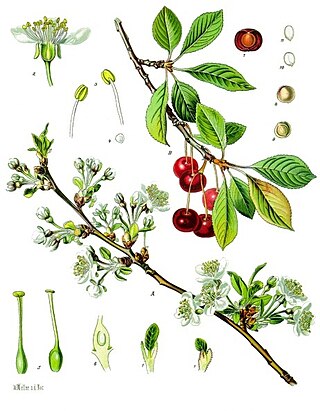Related Research Articles

Androsace, commonly known as rock jasmine, is a genus of flowering plants in the family Primulaceae, second only to Primula in the number of species. It is predominantly Arctic–alpine, with many species in the Himalayas, the mountains of central Asia, the Caucasus, and the southern and central European mountain systems, particularly the Alps and the Pyrenees.

Indigofera is a large genus of over 750 species of flowering plants belonging to the pea family Fabaceae. They are widely distributed throughout the tropical and subtropical regions of the world.

Anaphalis is a genus of herbaceous and woody flowering plants within the family Asteraceae, whose members are commonly known by the name pearl or pearly everlasting. There are around 110 species with the vast majority being native to central and southern Asia. There is one species native to North America that is fairly well known and popular in cultivation, namely the western pearly everlasting.

Draba is a large genus of flowering plants in the family Brassicaceae, commonly known as whitlow-grasses.

Vincetoxicum is a genus of plants in the family Apocynaceae. Although the species in Vincetoxicum have sometimes been included in Cynanchum, chemical and molecular evidence shows that Vincetoxicum is more closely related to Tylophora, now included in Vincetoxicum. The generic name means "poison-beater" in Botanical Latin because of the plants' supposed antidotal effects against snakebite.

Prunus subg. Cerasus is a subgenus of Prunus. Species of the subgenus have a single winter bud per axil. The flowers are usually in small corymbs or umbels of several together, but some species have short racemes. The fruit is a drupe and has no obvious groove along the side. The subgenus is native to the temperate regions of the Northern Hemisphere, with two species in North America, four in Europe, two in North Africa, and the remainder in Asia.
References
- ↑ "Clematis L." Plants of the World Online . Royal Botanic Gardens, Kew . Retrieved 26 January 2023.
- ↑ Lehtonen, Samuli; Christenhusz, Maarten J. M.; Falck, Daniel (2016). "Sensitive phylogenetics of Clematis and its position in Ranunculaceae". Botanical Journal of the Linnean Society. 182 (4): 825–867. doi: 10.1111/boj.12477 . S2CID 89233321.